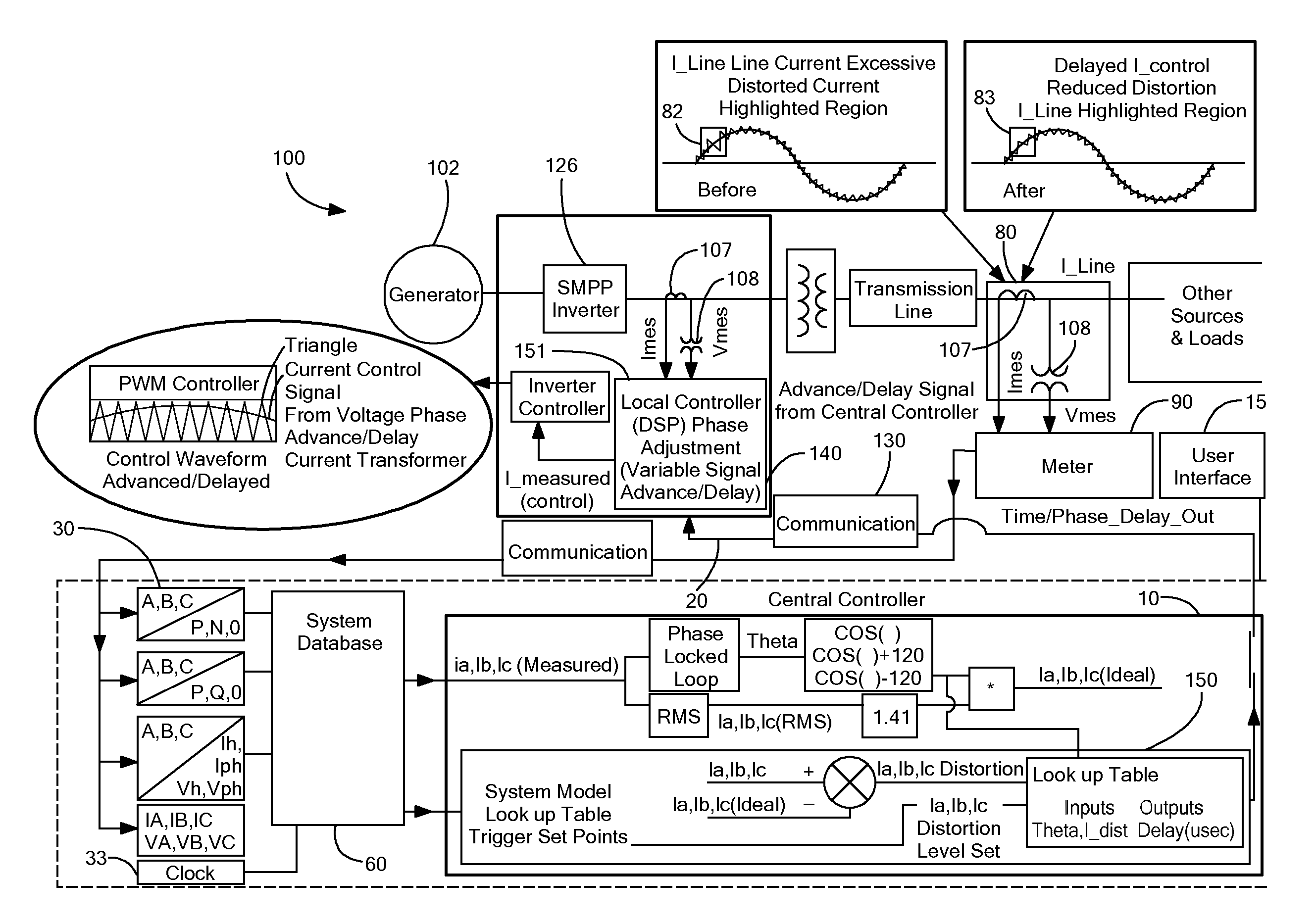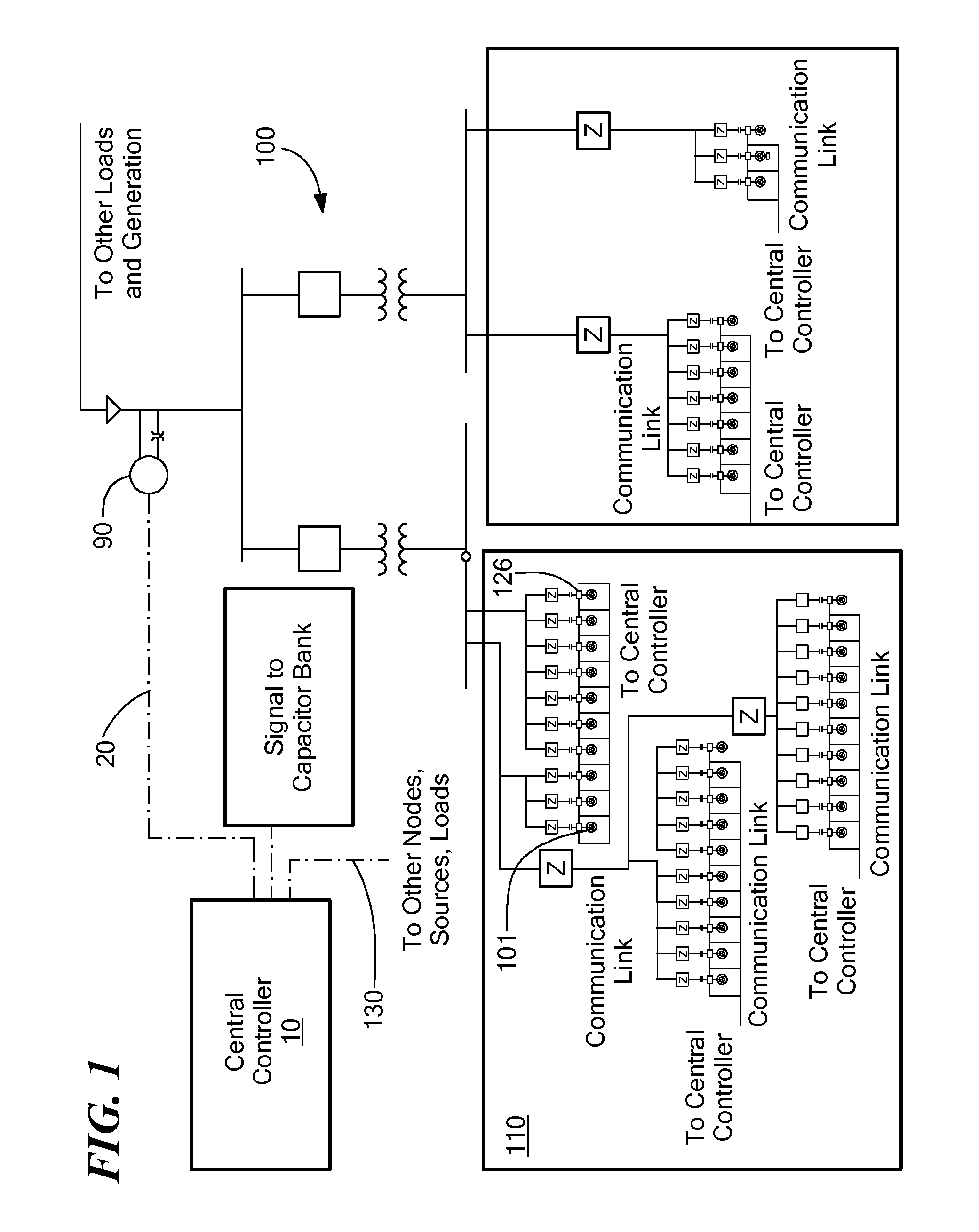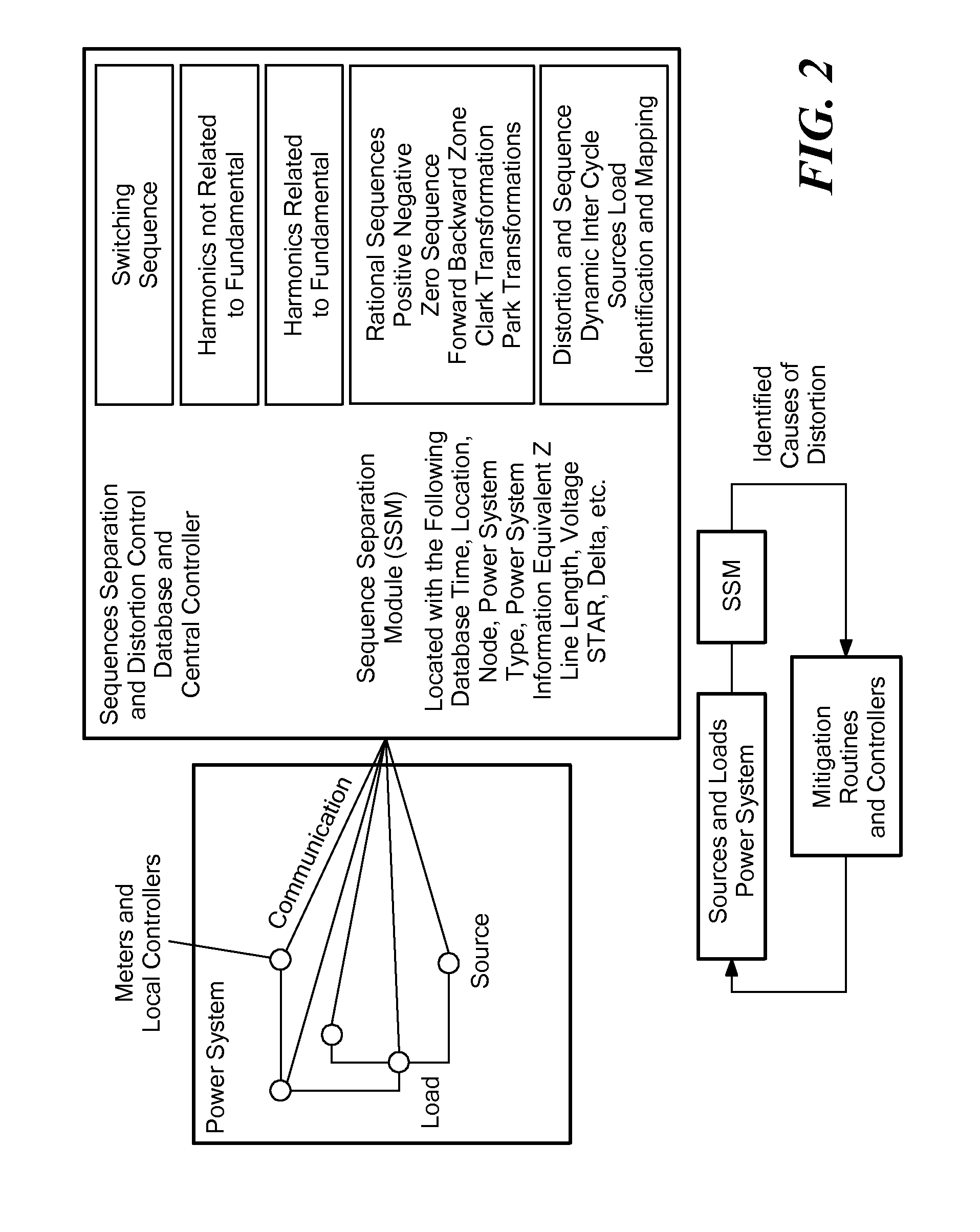Despite adherence to the aforesaid standard, there is evidence that multiple SMPPs can collectively construct undesirable and potentially damaging
harmonic distortion that may compromise the integrity of the
power grid.
Various methods have been employed for reduction of
harmonic content on polyphase power systems, however all of them are limited in that they eliminate only a particular class of
harmonics (namely, integral multiples of the AC fundamental), and in that each is capable of being applied only at a
single node of a power system.
Thus, for example, dynamic harmonic filters are known in the context of
AC power systems, however they only monitor, and improve performance at, specific single points on the system.
Currently practiced techniques are prone to damage both utility and customer equipment, as suggested, in the context of transformers in Parthemore, et al., “Gassing in Wind-Farm Transformers,”Windpower Eng.
In the past, power systems engineers called this “harmonic distortion.” The problem is larger however, and encompasses all manner of signal distortion.
However,
harmonic analysis is deficient in modern power systems and, even though switch mode power supplies and other modern piecewise or nonlinear elements are mentioned in IEEE 519, the standard is brief and insufficient on characterizing their behavior on the power system.
These newer topologies, such as switch mode power processors, produce distortion that is not a whole number multiple of the
fundamental frequency on the power system
Another deficiency in the current state of the art and existing processes is that, typically, signal distortion is handled only in the planning phases of a power system that is to be modified or a new power system.
This process uses models of the power system to predict what the harmonic
impact will be and does not assess the actual or measured
impact.
Yet another deficiency in the state of the art of harmonic distortion is that harmonic distortion is predicated on whole number multiples of the
fundamental frequency on the power system.
However, new switch mode power supplies placed either on the load or the sources do not always distort the signal at a whole number multiple of the
fundamental frequency.
Consequently, current state of the art of
harmonic analysis is incomplete when attempting to consider all the causes of signal distortion.
However, in reality this is not the case.
The signal distortion can be problematic because it may damage, age, or reduce efficiency of equipment within the power system.
However with new
distributed generation power plants such as wind farms, which use switch mode power processors,
plant operators have found old methods do not work as well as they did in the past.
However, in order to create these desired waveforms, the algorithms and PWM switching equipment will take an ideal waveform signal and distort it.
It has been observed that the magnitude of the distortion decreases as the frequency increases, but this is not always the case.
In
distributed generation and in distributed loads which use switch mode power supplies or power processors the distortion can add up at common location on the power system and the resulting distortion at higher frequencies may become unacceptable.
However SMPPs can only approximate the ideal
wave form for the load, often by replicating a template wave-form sampled from the grid to which it is connected.
Consequently, these imperfect wave forms created by SMPPs contribute to the overall distortion.
However, the converse is equally true since they are not coordinated and may constructively increase the level of distortion.
Currently, there exists no mechanism to know when or where the distortion may add up beyond acceptable standards since there are no standard measurements analyses that would capture these phenomena in their entirety.
Because of their considerable power ratings, three-phase SMPPs may be the main contributors to the
distortion problem.
Signal distortion and
harmonics on the power system can damage wind
turbine generators in a multitude of ways.
As one example, the problem of over voltage saturation is particularly damaging to transformers and wind
turbine generators.
The issue with this is that the picture is static and not fluid.
The existing methods of analyses do not include traveling
waves on the power system; nor do they consider the signal propagation delays through plants and controllers.
One problem resulting from this is that an engineer does not have an idea of what is causing the harmonic or, better stated, signal distortion, since we know harmonic analysis is limited in the first place, and unless it is a usual cause that can be easily identified, the engineer is unable to arrive at a determinate solution.
Sometimes they add up to increase in amplitude and create an impulse on the power system that can be damaging to equipment.
Currently, SMPP controllers are not coordinated to
handle this issue.
Each controller on its own will have low signal distortion, however, since they are in phase at a particular node, a signal distortion may increase or be compounded.
The aggregate effect is that the magnitude of a given frequency has increased and is damaging equipment.
However, the aligning of the distributed control systems is transitory in nature and constructively aligns or destructively interferes, thus hiding itself from engineers and technicians, and reoccurring when conditions enable rogue wave construction.
This signal distortion of the voltage is added to the existing distortion on the
transmission system.
Due to the complex nature of the power system, collector system, and
distributed generator (DG) controls, it is difficult to identify how and when the distortion problems will construct or occur.
 Login to View More
Login to View More  Login to View More
Login to View More 


